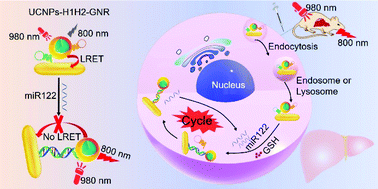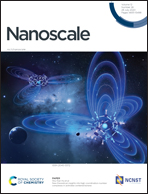A sensitive upconverting nanoprobe based on signal amplification technology for real-time in situ monitoring of drug-induced liver injury†
Abstract
Drug-induced liver injury (DILI) is increasingly recognized as one of the most challenging global health problems. Conventional in vitro detection methods not only lack specificity and sensitivity but also cannot achieve real-time, straightforward visualization of hepatotoxicity in vivo. Liver-specific miR122 has been observed to be a superior and sensitive biomarker for DILI diagnosis. Herein, a sensitive upconverting nanoprobe synthesized with upconversion nanoparticles (UCNPs) and gold nanorods (GNR) was designed to diagnose hepatotoxicity in vivo. After injection, the nanoprobes accumulated in the liver and were activated by miR122, and the signal amplification technology fully yielded luminescent amplification; hence, the detection sensitivity was improved. Because of the high tissue penetration capability of near-infrared light, this nanoprobe can achieve real-time in situ detection, thereby providing a novel technology for precise biological and medical analysis.



 Please wait while we load your content...
Please wait while we load your content...